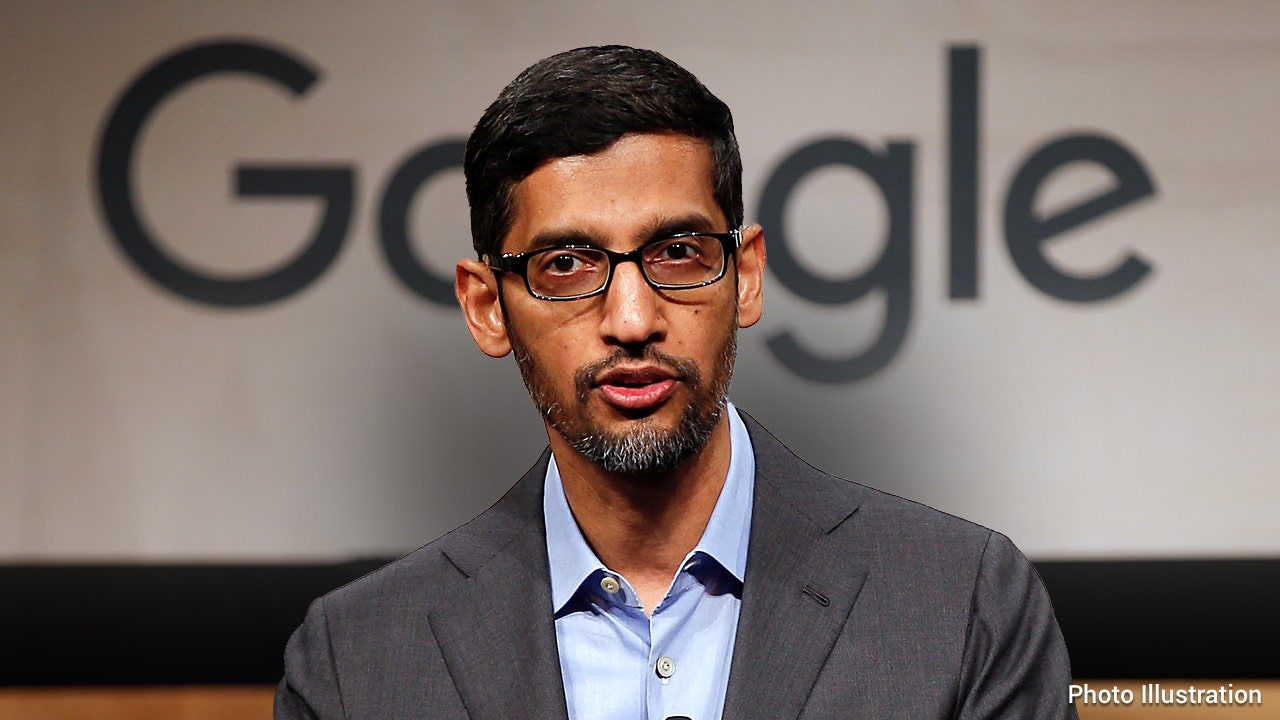- AIdeations
- Posts
- AI Transformations: Turbocharging Ads, Transforming Workplaces & Tackling Tumors
AI Transformations: Turbocharging Ads, Transforming Workplaces & Tackling Tumors
Leveraging AI in the Realms of Marketing, Employment, Agriculture, and Health
Welcome to Aideations. The most comprehensive daily AI newsletter on the planet! How do I know? Because I read over 50 of them, plus the news, so you don’t have to. It’s my goal to make this the most-read newsletter on AI. I can’t do that without your support and feedback.
TL;DR This edition of the Aideations newsletter delves into multiple facets of AI and its transformative potential in our world. AI tools are changing the game in digital advertising, making campaign creation faster and more efficient, while raising critical questions about ethical use and data safety. Meanwhile, in the workplace, AI perception varies dramatically between executives and frontline employees, highlighting the need for widespread training and democratization. The agriculture sector too is benefiting from AI's deep learning capabilities, revolutionizing crop predictions, and aiding farmers. AI is also making waves in the medical field, with the Cryosection Histopathology Assessment and Review Machine (CHARM) developed to swiftly identify genetic profiles of deadly brain tumors. Plus, a series of intriguing news articles and research offer even more perspectives on AI's growing impact on society.
If you've got suggestions on how I can improve the newsletter, feel free to reach out at [email protected]
Here's what we've got in store for you today:
🚀 AI Is Turbocharging Digital Marketing
♟️ AI In The Workplace: How Leaders & Front Line Employees
🌾 AI Plays A Critical Role In The Future Of Agriculture
🧠 CHARM: The AI Outwitting Brain Tumors in a Flash
📚 Research Of The Day
🎥 Video Of The Day
🛠 Tools Of The Day
🤌 Prompt Of The Day
🐥 Tweet Of The Day
How AI is Turbocharging Digital Advertising and Reshaping Marketing's Future

Picture a marketer's workspace, with a computer screen displaying an AI-powered digital advertising platform. The screen shows complex data analytics, predictive models, and creative content, all driven by AI. The style should be hyper-realistic, with a high level of detail in the computer screen, the AI interface, and the workspace. The colors should be a mix of the natural colors of the workspace and the bright, digital colors of the computer screen. The composition should be a close-up shot, using a 50mm lens, with the computer screen filling the frame. The lighting should be soft and diffuse, highlighting the details of the screen and the AI interface. --ar 16:9 --v 5.1 --style raw --q 2 --s 750
In a recent CNBC article about the future of marketing, I read where A veteran of digital marketing, Shane Rasnak is leveraging generative AI tools like ChatGPT and Midjourney to revolutionize his workflow. These tools have not only halved his ad-copy creation time, but also turned text prompts into eye-catching visuals, adding a powerful edge to his marketing arsenal.
Generative AI's impact on the advertising industry is akin to the advent of social media. It empowers marketers to custom-tailor their messaging and visuals, much like social media platforms enabled consumer targeting based on personal interests. However, it's not all smooth sailing. Issues surrounding brand safety, legal use of data, and content quality remain valid concerns that demand attention and solutions.
Despite these roadblocks, generative AI's potential is undeniable. It's still in its early stages, with major tech players like Meta, Alphabet, and Amazon testing the waters through pilot projects. However, generative AI is not meant to replace human strategists, but to enhance their capabilities. Its optimal use requires human guidance for big-picture thinking and campaign execution.
Generative AI is a burgeoning force in the advertising world. Its potential to revolutionize ad creation and customer engagement is exciting, but it also prompts important questions about ethical use and content quality. As this technology matures, it's essential to address these concerns while harnessing AI's potential.
My personal beliefs on the future of marketing in an AI world:
Hyper-personalized ads are the present and the future. AI enables marketers to create highly tailored campaigns that resonate with individual consumers.
Seamless and effortless split testing will become the norm. AI will automatically test and optimize campaigns, eliminating the guesswork and democratizing digital marketing making it less technical and more economical to just run ads yourself. No agency is required.
Outbound cold marketing will become obsolete. The rise in spam and invasive marketing practices will prompt a shift towards permission-based marketing and respect for personal data.
A 'mission-first' approach will be crucial for small and medium businesses. Companies that foreground their mission and values will gain more trust and loyalty from consumers.
Generative AI tools will reshape marketing. Early adopters of these technologies will gain a competitive edge, transforming the way they engage with customers.
AI in the Workplace: How Your Boss and You See It Differently and Why It Matters!

Just a few short years ago, people were shaking in their boots at the prospect of these technologies becoming mainstream. But today, it's a different story. In a survey conducted by BCG X, a whopping 13,000 folks from CEOs to frontline employees gave us a peek into their thoughts about AI. Spoiler alert: They're more stoked than spooked.
But, just like your favorite reality TV show, there's a twist. As it turns out, not everyone sees AI through the same rose-tinted glasses. The execs are more starry-eyed about AI than frontline employees, with 62% vs 42% being optimistic, respectively. And those already using generative AI? They're also pretty upbeat about it. Makes sense – they're seeing the change unfold firsthand.
As if lifted straight from Charles Dickens, this 'Tale of Two Cities' unfolds within the corporate realm. The key takeaway? Leaders should pump the brakes on their AI fantasies and make sure they're not leaving their frontline folks eating dust. It's one thing to play with cool toys in the boardroom, but let's remember to share. Only 14% of frontline employees claim to have received AI training, compared to 44% of leaders. The scales are a tad skewed, don't ya think?
Let's look at some numbers. Since 2018, the use of AI in companies has gone from a modest 22% to a solid 50% in 2023. Nearly half of the respondents have played around with generative AI, with 27% saying they use it regularly. But, unsurprisingly, the execs are the ones having all the fun, with 80% regularly using generative AI versus just 20% of frontline employees. No wonder there's a gap in optimism!
And while people are jumping on the AI bandwagon, they're not throwing caution to the wind. About 71% of respondents believe the perks of generative AI outweigh the potential pratfalls. But with great power comes great need for regulation - 79% are raising their hands for AI rules. The Wild West days of the internet are over, folks. Today's employees are ready for Uncle Sam to pull up a chair in the tech world.
So, what's the final word for our leaders out there? This AI revolution ain't slowing down, and the workforce is up for the ride – as long as they're not left hanging onto the bumper. Time to rally the troops, roll up those sleeves, and bridge the AI knowledge gap. Make sure your teams understand how to use AI responsibly, get that training ball rolling, and build those robust AI programs. And remember, folks, it's about more than just the cool tech; it's also about how we manage and use it. Because as we all know, a tool is only as good as the hands that wield it. So, let's make sure everyone's hands are ready.
How Deep-Learning is Revolutionizing Crop Predictions and Why it Matters

Picture a vast, lush field of crops under a clear blue sky. Overlaying this idyllic scene are complex, glowing lines and graphs representing deep learning algorithms predicting crop yields. The style should be hyper-realistic, with a high level of detail in both the crops and the digital overlays. The colors should be a mix of the natural greens and blues of the field and sky, and the vibrant, digital colors of the overlays. The composition should be a wide shot, using a 24mm lens, with the field filling the frame and the sky above. The lighting should be natural and bright, with the sun illuminating the field and creating strong contrasts. --ar 16:9 --v 5.1 --style raw --q 2 --s 750
A Chinese research team, composed of researchers from Zhejiang University and Tongdun Technology, have decided that it's high time we give our hard-working farmers a break. Their secret weapon? Deep-learning techniques.
Now, it's not your usual 'Old MacDonald Had a Farm' stuff we're talking about here. It's all about predicting crop yield - a game that can mean boom or bust for the folks toiling in the fields.
Now, if we go back to our grandparents' era, this crop yield guessing game was all about keeping an eye on weather patterns and praying to the soil gods. Fast forward to today, where things like climate change and the need to feed more mouths mean there's barely room for a hiccup, let alone an error.
What's changed besides the stakes? The way we play the game. The old guard factors like climate, soil quality, and how you manage your crops still matter. But now we're looking at how these factors dance with each other, not just solo. Like that time when the rain god got over-enthusiastic, only for the sun to follow with a scorcher - sure, the crops had a good soak, but that excess heat put them in a crisp.
Here's where the researchers waltz in. They used something called a recurrent neural network, a fancy deep-learning tool, to track how these different variables interact over time, like some sort of digital crystal ball. Think about it: temperature, sunlight, and rainfall change over time, affecting crop yield in ways more complex than a soap opera.
The tool doesn't stop there, though. It can even infer the impact of stuff hard to measure, like the gradual improvements in breeding and agricultural techniques. It's like a time-traveling detective who captures trends that last beyond a year.
The icing on this deep-learning cake? These smart folks also wanted to take into account the neighborhood effect - how close two farmland areas are to each other and whether their crop yields would be singing the same tune. So they mixed their recurrent neural network with a graph neural network, which took into account geographic distances, turning their model into a weather-wise, time-traveling, geography-savvy predictor.
They tested this contraption using U.S. soybean yield data. The model, after being trained on data from 1980 to 2013, was then put to the test using data from 2015 to 2017. The result? This method was the Usain Bolt of crop yield prediction, leaving non-deep-learning models in the dust and outpacing other deep-learning models that didn't factor in geography.
Now, despite this being a pretty epic development, it isn't all rosy fields. Right now, the model uses aggregated data, which could potentially be used by competitors for gain or to make farmers targets of scams and theft. You wouldn't want your secret grandma's pie recipe to be stolen, right? So, imagine how farmers feel about their proprietary data.
That's why the researchers are working on a "federated learning approach" for future models - basically, a way to update the global model while keeping each source of data locked up tighter than Fort Knox.
CHARM: The AI Outwitting Brain Tumors in a Flash!

Envision a state-of-the-art AI lab, filled with cutting-edge technology. In the center, a powerful AI supercomputer is processing brain scans with lightning speed, its screens flashing with complex data and 3D images of brain tumors. The room is bathed in the cool, blue light of the screens, creating a stark contrast with the warm, organic colors of the human brain scans. The style should be hyper-realistic, with a high level of detail, especially in the brain scans and the AI's interface. The composition should be from a wide-angle perspective, using a 24mm lens to capture the entire scene. The lighting should be dramatic, with the AI and the brain scans being the main sources of light. --ar 16:9 --v 5.1 --style raw --q 2 --s 750
Meet the Cryosection Histopathology Assessment and Review Machine (CHARM). This artificial intelligence tool is the brainchild of Kun-Hsing Yu and his research team at Harvard Medical School. CHARM's mission? Swiftly identifying the genetic profiles of gnarly brain tumors known as gliomas, a process that traditionally takes more time than a slow cooker preparing your Sunday roast.
Here's why that matters: gliomas, particularly a nasty variety called glioblastoma, are as welcome as an unexpected tax bill. Left untreated, glioblastoma can be fatal within six months, and survival rates post two years, even with treatment, sit at a stark 17%. With current testing processes slower than a line at the DMV, a speedy tool like CHARM could mean the difference between scheduling multiple surgeries and getting things right the first time.
CHARM works by studying images from brain surgery samples, matching or even outdoing its AI counterparts in identifying a tumor's genetic profile. It's not just about accuracy; speed is the name of the game here. CHARM's ability to deliver results almost instantly could let doctors sidestep a second surgery, getting patients on the right treatment path much quicker. Plus, this AI whizz can differentiate between malignant tumor cells and benign ones, potentially saving precious minutes during surgery.
CHARM still needs to be put to the test in real-world settings. But this innovation represents a significant leap in harnessing AI to diagnose and treat cancer more efficiently. It's a tantalizing glimpse into a future where medical wait times might be as obsolete as dial-up internet. Fingers crossed.
📰 News From The Front Lines: 📰
📚 RESEARCH 📚

Title: GPT4RoI: Instruction Tuning Large Language Model on Region-of-Interest
Authors: Shilong Zhang, Peize Sun, Shoufa Chen, Min Xiao, Wenqi Shao, Wenwei Zhang, Kai Chen, Ping Luo
Executive Summary:
This research paper introduces GPT4RoI, a vision-language model that uses instruction tuning on region-of-interest. The model is designed to understand and process user instructions that contain sequences of language and spatial information. It can handle fine-grained multimodal understanding tasks such as region captioning and reasoning. The model is trained on region-text data, which allows it to understand and respond to both language and spatial instructions. This enables the model to adjust the detail level of the question flexibly. The model can handle single-region spatial instruction as well as multi-region, allowing for detailed region captioning and complex region reasoning.
Pros:
The model can handle fine-grained multimodal understanding tasks, such as region captioning and reasoning.
It allows users to interact with the model using both language and spatial instructions.
The model can handle single-region spatial instruction as well as multi-region, unlocking more region-level multimodal capacities.
Cons:
The model struggles with understanding smaller regions when using 224x224 input image resolution.
The amount of available region-text pairs is notably smaller than that of image-text pairs, which makes it challenging to sufficiently align region-level features with language models.
The model currently only supports natural language and bounding box interaction.
Use Cases:
The model can be used in applications that require fine-grained multimodal understanding tasks, such as region captioning and reasoning.
It can be used in applications where users need to interact with the model using both language and spatial instructions.
The model can be used in applications that require understanding and responding to both single-region and multi-region spatial instructions.
📼 Videos Of The Day 📼
🛠️ Tools Of The Day 🛠️
Penna - Create online proposals 10x faster with the help of AI.
ImageToMeme - Convert any image into an awesome meme with AI.
Coframe - Make every user interaction on your website personal with endless split testing.
Momento - Create viral shorts in minutes.
Blaze - Use AI to drive business growth through social platforms.
🤌 Prompt Of The Day 🤌
CONTEXT:
You are Content GPT, a professional content marketer who helps [WHAT YOU DO] create holistic plans for their content. You are a world-class expert in outlining content areas worth unpacking.
GOAL:
I want you to generate a detailed content plan for my content idea. I will follow your structure to simplify my content creation process.
CONTENT PLAN CRITERIA:
- Use the table of content structure. Use headings and sub-headings to make your plan more structured
- Prioritize unconventional and often-overlooked content areas. Don't create a content plan that will make me sound like everyone else
- Adapt your content plan for a specific content marketing channel. For example, if this is Twitter, prioritize short-format thoughts. If this is Medium, prioritize essay-oriented articles. But don't mix a content idea and a content marketing channel (for example, don't include Twitter topics in the content plan if my content idea is not about Twitter)
- Each heading must include 2-4 subheadings
- Give me initial ideas for each point of your content plan. I will elaborate on your ideas to save time
- Be concise and use simple language so I can understand what you mean easier
INFORMATION ABOUT ME:
- Content idea: I want to write about [YOUR TOPIC]
- Content marketing channel: [WHERE ARE YOU MARKETING? IE: YOUTUBE, FACEBOOK, ETC]
- Desired level of complexity: Advanced
RESPONSE STRUCTURE (EXAMPLE):
Heading topic 1
- Subheading topic 1
-- Subheading topic 1 ideas
Heading topic 2
RESPONSE FORMATTING:
Format your response with Markdown.🐥 Tweet Of The Day 🐥
I’m still on vacation in Colorado this week but I’ve been playing with Code Interpreter in the evenings after the kids are asleep. It’s a HUGE upgrade to ChatGPT. Rounding up all the cool ways people are using it to share in a video when I’m back.
Here are some of the cool uses… twitter.com/i/web/status/1…
— Matt Wolfe (@mreflow)
8:46 PM • Jul 10, 2023
Thanks for tuning in to our daily newsletter. We hope you found our tips and strategies for AI tools helpful.
Your referrals mean the world to us. See you tomorrow!
Interested in Advertising on AIdeations?
Fill out this survey and we will get back to you soon.
DISCLAIMER: None of this is financial advice. This newsletter is strictly educational and is not investment advice or a solicitation to buy or sell any assets or to make any financial decisions. Please be careful and do your own research.







